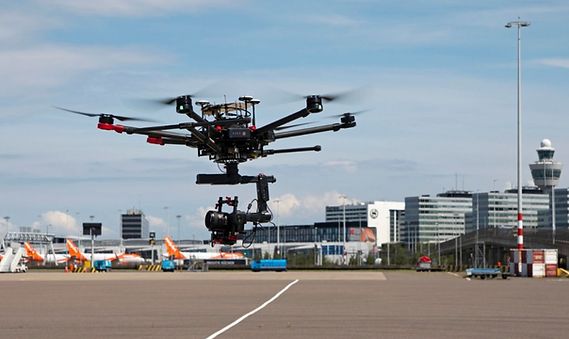On behalf of Dutch air navigation service provider LVNL, AirHub Consultancy and MovingDot have been working on defining the information required for safe and efficient drone operations, referred to as Drone Aeronautical Information Management (D-AIM). This includes data such as obstacle data and CNS systems. This information is essential for the safe integration of drones, regardless of the airspace type or whether the information is static or real-time. This project is a significant step towards the secure integration of both manned and unmanned aviation within our airspace.
The study
While today’s operations in controlled airspace are limited by capacity and legislation, operations in uncontrolled airspace are beyond the scope of LVNL’s services. However, they might play an important role in uncontrolled airspace as well in terms of information management (in traditional aviation known as AIP) and in the near future with U-space. LVNL asked AirHub and MovingDot to identify the required information that is needed to safely conduct drone operations, how it can be defined as D-AIM, and how this relates to the basic architecture for different types of airspace (uncontrolled, controlled, and U-space).
The outcome of this research shows that D-AIM is necessary for safe and efficient unmanned operations. In addition to traditional AIM elements, specific information is needed to be able to safely conduct drone operations, such as population density information and CNS systems. The additional information provided in this assignment as part of the D-AIM is considered independent of the type of airspace where the flight will take place and can be both static or dynamic (real-time).
This means that the definition of Drone AIM should be considered part of the bigger picture, including but not limited to the implementation of U-space. It therefore also raises the question of what role LVNL will play in the U-space ecosystem. This can vary from being the ATM stakeholder (current role), the Common Information Service (CIS) provider, a U-Space Service Provider (USSP), or even all three.
It still needs to be made clear which role LVNL will take. During this project, the different roles and corresponding responsibilities have been addressed to give LVNL insight into the possible roles, and it has also visualized the basic architecture for the different types of airspace. In neighboring European countries, choices are being made or have already been made regarding the role of the ANSP. The Swedish ANSP (LFV) has opted for a Single CIS provider principle, just like in Spain where ENAIRE has opted for a centralized model in which ENAIRE will be certified as the CIS provider.
With the results of this project, LVNL has a better understanding of the required information (flows) and the corresponding roles (for LVNL and other stakeholders).
For more information visit:




